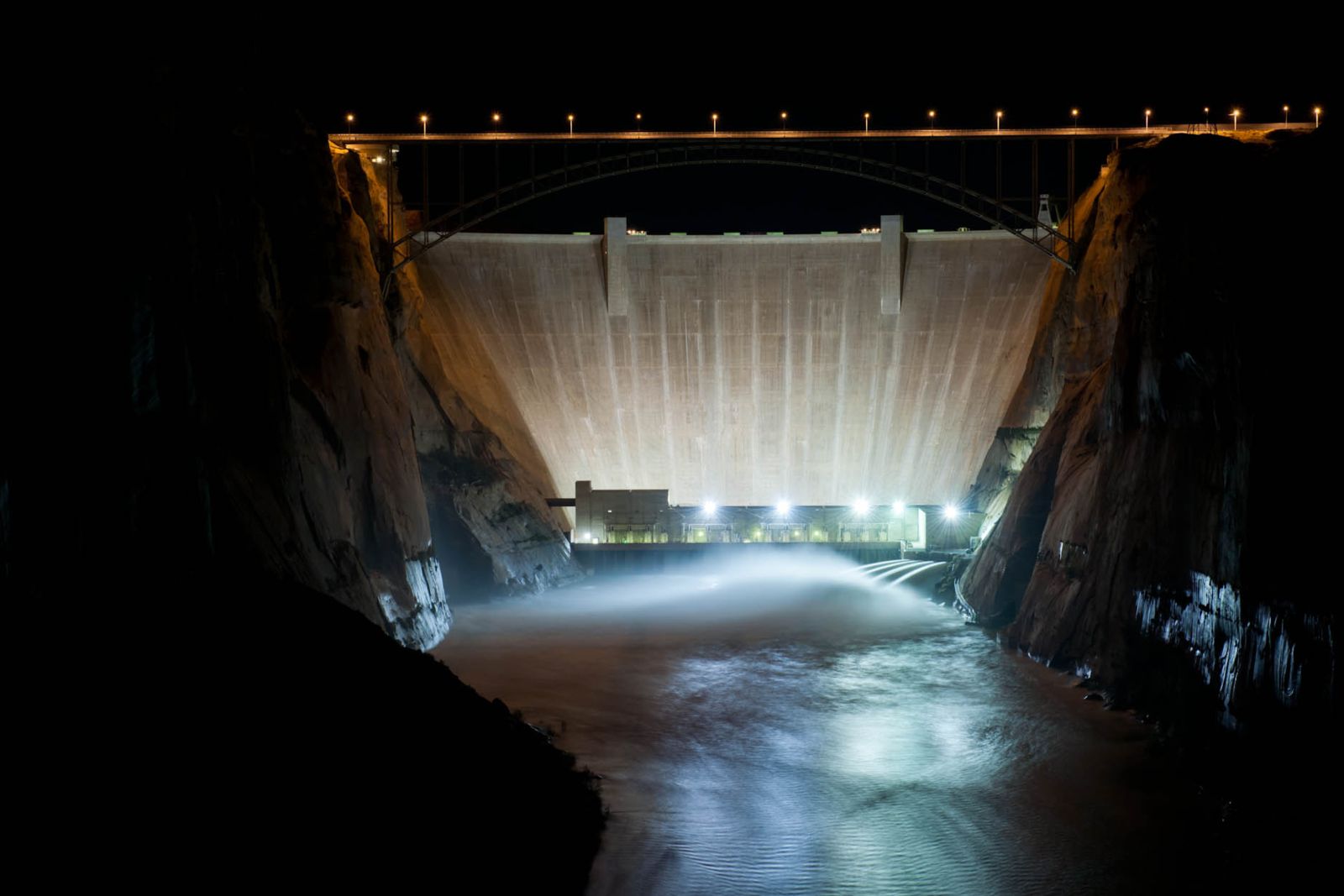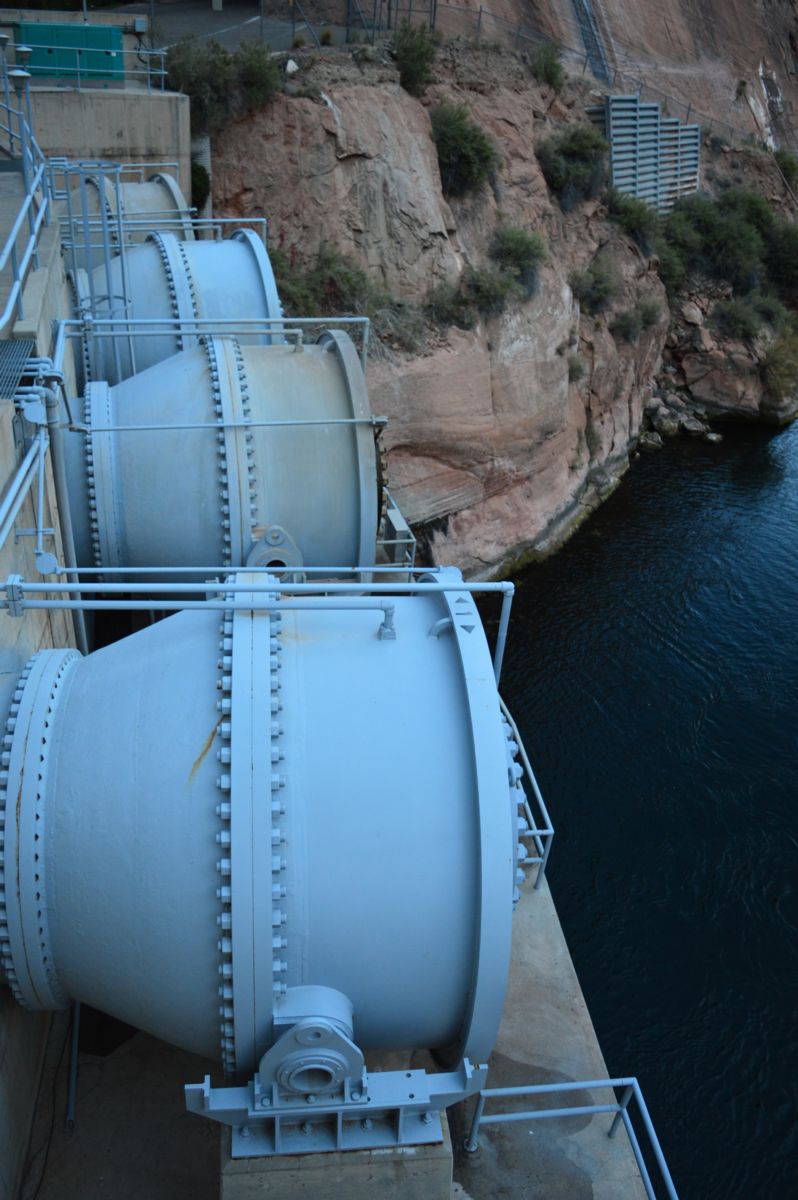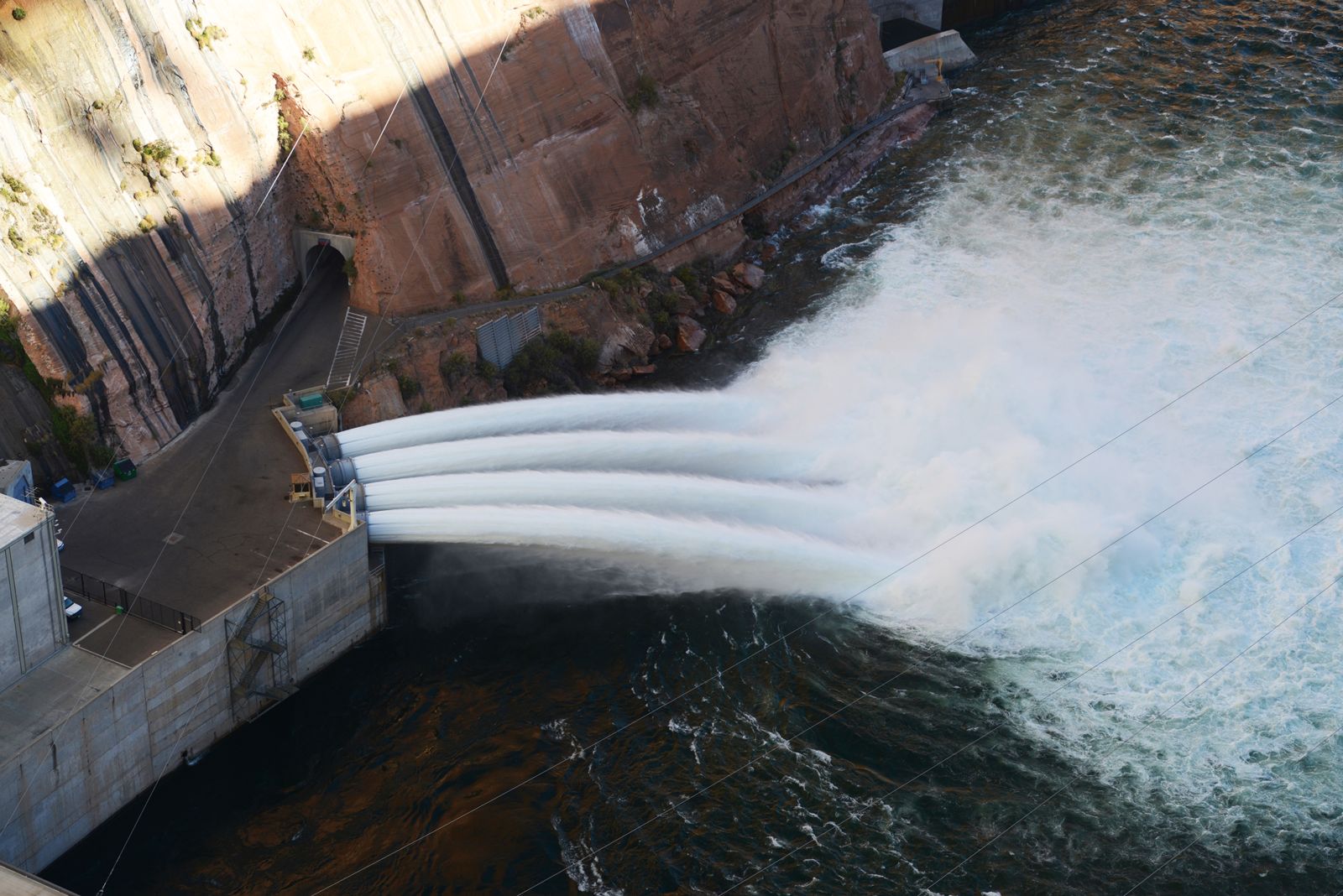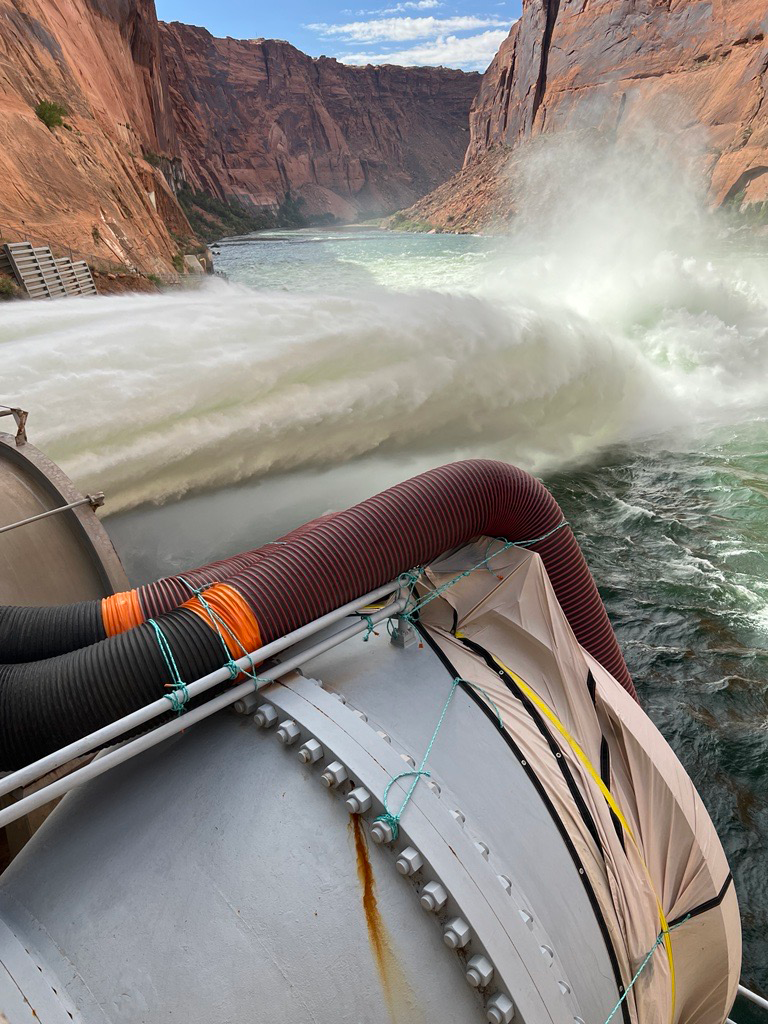From JPCL September/October 2024

Fig. 1: The relining of the Glen Canyon Dam’s four outlet structures recently commenced to coincide with the dam’s 60th anniversary.
At the beginning of September, the U.S. Bureau of Reclamation announced that a project involving the relining of four river outlet works at Glen Canyon Dam in Page, Arizona, had commenced—the first relining of the outlet structures since the dam was initially constructed 60 years ago. However, while the original coal-tar epoxy lining system on the four outlet works—also known as bypass tubes—were originally applied with brush and roller and touched up by hand over the decades, the current undertaking is employing an optimized lining system backed by laboratory testing and case histories on other Reclamation infrastructure, applied via robotic method.
This article outlines the scope of work and how this important piece of infrastructure is getting its own state-of-the-art upgrades that will improve its efficiency in delivering water and power, just in time for its 60th birthday.
Construction for Glen Canyon Dam kicked off in 1956, with the authorization of the Eisenhower administration and the Colorado River Storage Project. By September of 1964, the project was completed, and the dam’s power plant generated its first watts of hydropower.
Located in northern Arizona on the Colorado River, Glen Canyon Dam today impounds Lake Powell, the second-largest man made reservoir in the United States and the largest storage unit in the Upper Colorado Basin. It is an important water source for Nevada and other Colorado River states, as well as a source of hydropower for nearly 500,000 households in the U.S.

Fig. 2: Exterior view of the outlet structures, also known as bypass tubes.
The outlets consist of four steel pipes that move water from Lake Powell directly downstream into the Colorado River, bypassing the hydropower generating units. According to Reclamation, the outlets are used when the power plant is unavailable to release water or when required releases exceed the capacity of the power plant. Over the years, the dam’s outlets have not been used frequently, as water is almost always conveyed through the penstocks to produce hydropower before it is released downstream.
While Lake Powell was officially considered full for the first time in 1980 and saw record water levels in the ensuing years, by the 2000s the region started to experience a prolonged drought, and lake levels shrunk. These conditions presented operational challenges as the dam’s team worked to optimize power generation despite the reduced water levels.
As such, the outlets could be used more frequently, as experienced with the recent implementation of cool-mix flows, which release water from both the penstocks and river outlet works to send cooler water downstream and disrupt the spawning of nonnative fish below the dam.
When constructed, the Glen Canyon Dam bypass tubes were coated with a coal-tar epoxy, which for many decades was considered one of the most effective and widely used coating systems for protecting steel infrastructure from corrosion. However, in recent decades, health safety and environmental issues associated with their application have led to a decline in—and in some cases, prohibition of—their usage.
Most recently, the outlet works’ original coal-tar coating had been showing normal signs of wear and tear, and while spot repairs had been completed as needed over the years, the lining was finally due for a full replacement.
As such, the current project includes removing the old lining via abrasive blast-cleaning with a robotic blasting system. The blasting process is reportedly contained, with spent abrasive being vacuumed and recycled.

Fig. 3: The outlets are most commonly opened during periodic high-flow experiments conducted by Reclamation.
Next, the outlets will be relined with an epoxy primer and polysiloxane topcoat, applied via a robotic sprayer that lines pipes by traveling in a circuitous route along their interior. This lining system has been extensively studied in various laboratory tests and successfully applied to numerous infrastructure, including Fontana Dam in North Carolina), Pineview Dam in Utah and Grand Coulee Dam in Washington. The epoxy-polysiloxane system will reportedly provide corrosion protection, as well as abrasion and impact resistance for the tube interiors.
The contractor will reportedly work on one outlet work at a time, allowing the other three to operate as needed to continue sending cooler water downstream during the cool-mix flows.
While outlet works maintenance was recommended after inspections in 2017, lower water levels in recent years created the potential for increased use of the outlets in coming years, making the relining project a more urgent priority, according to Reclamation.

Fig. 4: One of the four bypass tubes currently under containment while robotic blast-cleaning takes place in the interior.
The current outlet relining project, funded through an $8.9 million investment from the Bipartisan Infrastructure Law as part of the Biden-Harris administration’s Investing in America agenda, will reportedly take one year to complete.
“It is Reclamation’s duty and obligation to operate all of our facilities — including Glen Canyon Dam — in a safe manner and to maintain reliable downstream releases to meet the nation’s water and energy needs,” said Wayne Pullan, Reclamation’s Upper Colorado Basin Regional Director. “The relining of the outlets ensures Glen Canyon Dam continues to operate in a manner that meets its congressionally authorized purposes safely and efficiently well into the future.”
Reclamation also reported that it recently found new and minor cavitation damage during a high-flow experiment in April 2023. While they stipulated that relining the outlets won’t prevent the risk of additional cavitation when operating at low reservoir levels, its recently developed interim operating guidance and additional analyses for the outlets will reportedly help Reclamation in reducing further risk.
Tagged categories: Features; Linings; Water/Wastewater